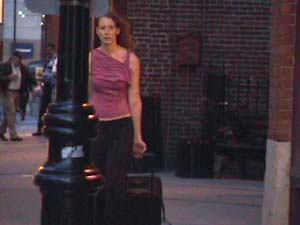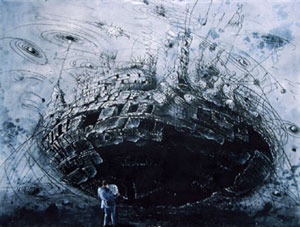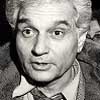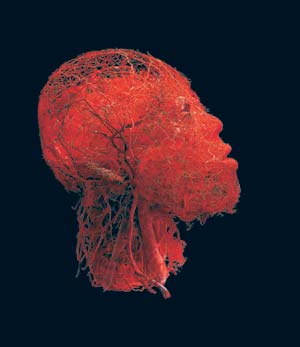After a series of interviews with local performance artists and organizers, as well as attending all the performance events I could manage over the past few months, I sat down to write something about the state of performance art, here, today. Of course, I found myself not knowing where to begin. And perhaps this is important. It may be that a summary distinction is the last thing that I should offer for a discipline that prides itself on challenging the seduction of formula, script, and code, with the promise of the disruptive, erruptive event.
So, instead let me offer snippets of what I’ve gravitated towards, and some insights from a few central conversations. On the one hand, I want to share some of the excitement that I have for what I am seeing, share the way that I am seeing it, and why it keeps my attention like few things do these days. On the other hand, my aim with this is to think through the discipline. I am interested in, on a preliminary level, not only how we can understand what is at stake in the forms of performance art practices that I am highlighting, but in considering different strategies for writing about it.
Accordingly, here are:
4 Events To Watch with a description of one performance at each (many apologies to all the other, and excellent, performers), and, following this:
3 Perspectives From (some of) The Players…
EVENTS TO WATCH
Event # 1: TEST 3
TEST is a bi-monthly performance art event dedicated to “giving students and established artists the opportunity to perform new works alongside one another at A Square Art Space, an emerging non-profit art space.” TEST 3 was held May 15th , with Dirk Adams, Gerti Berg, Kaetie Dudek, Mark Edwards, Julia Handschuch, Sandy Huckleberry, Milan Kohout, Mary Novotny-Jones, Vela Phelan, Becki Scotti, and Paul Waddell. For information on future events contact:testperformance@yahoo.com.
strategy 1: a simple description
“POSSIBLE/IMPOSSIBLE being”
Gerti Berg began this durational action, developed for TEST 3, naked, with a hammer and nails, sitting on the stoop before the only bathroom at the TEST site. She began creating a cradle for her feet by carefully hammering large nails in between each of her toes and around her heels. In the end it became clear that Berg was nailing her feet onto a single plank of plywood, maybe two feet across. This became apparent as soon as Berg got up and awkwardly shifted herself, plank and all, up the one step into the bathroom space, and into an already drawn bath where she lay, feet in the air, for the entire event (a total of approximately 6 hours).
For the entire night, anyone who wanted to go to the bathroom had to do it with Berg in the bathtub.
Event # 2: Mobilize 3
This international performance art series is produced by both Jamie McMurry and Mobius. “Performance Projects 2” was held at Evos Arts, Thursday, May 6, 2004, with Jeff Huckleberry, Milan Kohout, and Kristina Lenzi. Previous Mobilize events were held at Oni, (with Marilyn Arsem, Adina Bar-On, and Julie Andree T.) and at the Charlestown Working Theater (with Dan McKereghan, Marialuisa Ramirez, and Jed Speare). For information on future events visit:http://homepage.mac.com/fnfestival/PhotoAlbum29.html and www.mobius.org.
strategy #2: a remnant transcription
“What’s Broken?”
(A direct transcription of the notes that I took while watching Jeff Huckleberry’s performance, followed by the text that Huckleberry printed in the program as a statement on the piece.)
Energy pacing/ loud other side of wall/ slam/ stop pain/ shake/ and go/ kick-kick-kick/ ply: crack down middle/ foot slam break and go through/ room loud construction/ red/ curtain hole/ shape of Jeff hanging on wood saw-horse/ body metaphor/horse again, taped with velvet self/ red zip-lock with paint/ an axe waits/ we move/ he tapes the bags to the horse and we move again/ here it comes… staples legs and arms/ a doll /a puppet/ a wooden horse/ a black belly/ a Rauschenburg/ straps and puts on under a big hairy black coat-jumpsuit/ and he’s huge/ the harness comes and two cement blocks/ two hammers hang from the ceiling/ watching wondering what next / and finally the paint bags splat/ the axe bursting them, paints whole self-effigy/ red/ still carrying blocks/ still red/ still sweating/ carries the burst bag to a piece of plywood on floor/ brings effigy over / hangs from ceiling/ rigs it up dangling/ frustration, empathy / on comes the headdress/ down come the hammers and off/ the noise gone/ silence/ slowly hammers nails in 1 2 3 4 / into block of wood/ blocks mimic ones on back/ still sweaty, now red/ stops/ and test begins/ the test which will invariably fail/ banging breaks the blocks/ he does it twice/ what is the test?/ don’t know but he tries again/ turning block over / attacking/ all the way in / then/ rips wood off door that he bolted himself to begin with/ fails/ gets the drill/ opens door/ infinitely less satisfying but infinitely more poetic/ stands head bowed waiting for us to leave/ we gather in the hall where we started/ waiting/ we clap.
“Hey! How did that get broken?”
“I told you to be careful, now go clean that up.”
“O.K. don’t play around with that again, alright?”
“Did you hear me?”
“Huh?”
“What did I say?”
“O.K. Go and Play.”
Event # 3: Performance Projects 2
Put on by the School of the Museum of Fine Art’s Performance Projects class (under the direction of Jamie McMurry), this event showcases work, developed in a classroom setting. [“Performance Projects 2” was held at Evos Arts, April 29th & 30th, with Helen Pfann, Juniper Perlis, Maya Urbanowicz, Kaetii Dudek, Anais Adair, Sarah Cronin, and Christopher Rand. For information on future events visit: http://homepage.mac.com/fnfestival/Menu10.html.
strategy #3: a narrative positioning
Clothes II
In Juniper Perlis’ one year life/performance “Clothes II” she followed up on Clothes I (a piece in which she put all the clothes that she owned into two suitcases, unpacked them in front of the audience and put them on one by one until she could put on no more.) Clothes II again involved Perlis packing two large suitcases with almost every piece of her clothing. The only exceptions were pieces that had been previously owned or hand made for her (for example, a knit sweater from her grandmother). This year long follow up draws both on Linda Montano’s ongoing series of year-long pieces, as well as pieces like Bas Jan Ader’s “All My Clothes” (1970).
For eleven hours Perlis walked non-stop in circles, dragging the suitcases around the block that surrounded the performance site. She arrived at 11 am and began as locals stopped, I imagine, to grab early lunches at the cafés nearby. She continued through the day and into early evening as her fellow performers began to arrive and set up for the evening’s event. She walked while the performances happened upstairs at Evos. She continued until someone told her that 11 PM had arrived, at which point she led us halfway up the block to a small public patio. There, she methodically and casually striped down to nothing, and, standing there naked, asked if anybody had any clothes for her. The following had been circulated on the invitations for the event and in our programs:
“in Clothes II I will leave behind all my clothes except those which have been previously owned and then given to me. If you would like to make a donation of your own clothes, I wear size ii women’s shoes, pants size 34W/ 34 L, medium shirts with extra long sleeves and size 10-12 dresses and skirts. Thank you.”
Dressed in mismatched clothes, Perlis then stepped away, leaving the two suitcases and the clothes she had worn for the performance lying in a heap. The audience, including a crowd of locals who had vacated their seats at the pub, fell like a pack on the suitcases, scavenging shirts, skits, shoes, robes.
For a full year Perlis will wear only clothes given to her that have been previously worn. From head to toe, inner to outerwear—all previously worn, and all from the generosity of others (anyone with clothes to donate, contact Juniper Perlis at bugfacehead@yahoo.com.
Event # 4: Currency 2004
The Currency International Festival of Contemporary Performance was founded by Dan McKereghan in 2002. The goal of Currency is to show current trends in contemporary global performance art activities by presenting new work from a wide range of artists of all races, genders and geographical locations. “Currency 2004” was held at Chashama, NYC (Anita Durst, artistic director), March 18-20, 2004, with Chumpon Apisuk, Marilyn Arsem, Peter Baren, Adina Bar-On, Jeffry Byrd, Sylvie Cotton, Peter Grybowski, Darryl Hell, Alistair MacLennan, Jill McDermid, Boris Nieslony, Marialuisa Ramierez, Andre Stitt, Artur Tajber, and Lorena Wolffer. The next edition is currently scheduled for Fall 2005. For information on the next Currency contact:do2be@earthlink.net.
strategy #4: a conceptual approach
Departures
Marilyn Arsem’s “Departures” (also performed at the opening of “WAR?PEACE?”, at Studio Soto and Corporeal Heat, was developed as an offshoot of her current “Writing Ada” project. As with many of Arsem’s pieces, the Ada project is based on years of research (primarily in 19th century archives). Arsem’s aim for “Departures” was to translate the concerns of the Ada project (an exploration of death, the ‘afterlife’, and a porousness between the two) into something addressing contemporary events. Feeling removed from the war in Iraq, and in face of an unrelenting bombardment of images, Arsem decided to approximate, in the performance space, the smell of a body that has been rotting in the sun. The piece, designed to be the final event of an evening, was a collision of visual beauty and horrific smell. Her central concerns were how to bring attention to, in her words, the curatorship of life, without seeming overbearingly didactic, and how to talk about war with the open-endedness of poetry.
Formally she did this by taking us on a walk between a series of globes, hanging from the ceiling and seductively glowing in low light throughout the space. Bringing the audience on a trek from one to the other, Arsem accompanied us with a narrative ‘for those who are leaving, and for those who have already gone.’ This narrative began as Arsem placed sand into the palms of the audience, informing us that we were holding 12 million grains in each handful. (The population of NYC is 12 million, so each person at the Currency performance was holding a representation of the population of the city.) At this point a few of us were asked to gently place the sand into an empty globe.
The conversation moved between the many globes, including a large dangling rock, approximately the same scale as the globes, on which Arsem had grown a bit of grass (this represented our fragile ecosystem). There was also a globe filled with water, into which Arsem poured a bag of salt while talking about the salt water of the oceans, of our bodies, on our skin. The rotting meat globe came with the confession that Arsem wanted to smell death (“I know that I will smell like that one day” she quietly stated). The final globe was an empty one, before which Arsem began to talk about molecules—how over the time we had spent in the gallery space, not only had we ingested molecules from the rotting meat, but also from each other. The final gesture of the piece was to caution those audience members still holding sand, not to throw the sand away when they became tired of taking care of it, but rather to place it, carefully, in the empty globe.
PERSPECTIVES
On a separate occasions I had the opportunity to speak with the TEST organizers about their experiences, as well as to ask Marilyn Arsem, as someone who has been active in the performance art scene in Boston for over 30 years, and Jamie McMurry, as someone who has just arrived here, to tell me a bit about their backgrounds and offer a perspective on what is going today.
perspective #1
Marilyn Arsem began by doing collaborative work at her loft, as well as in ‘non-art’ public spaces, in mid 70s-- actions focused on the boundaries of what was legible as art. In 1976 this collaborative group of artists took name of Mobius Theatre. The next year the newly active Mobius Theatre loft burned down & Mobius moved to Chinatown, migrating through a number of spaces. They only took over the Congress street space, with which most of us are familiar, in 1983, and it is at this point that, in order to reflect the multidisciplinary and performance art basis of much of the work they were engaged in, they changed their name to Mobius inc. Their aim with Congress street was to offer a space for work that ‘fell between the cracks’ and couldn’t show easily in any of the existing spaces in Boston-- a space that was to be active every week of the year and where experimental work could be expected and anticipated, not just heard about afterwards…and for 20 years, that’s what it was. Since losing its Congress street home Mobius has turned back to the nomadic structure it began with, back to its roots as a group rather than a space. Its commitment remains the same, however: fostering artistic exploration while producing an educated audience for performance art.
One aim for the re-mobilized Mobius, inc., Arsem says, is to re-establish a name for itself as a mobile group that is just as active and crucial for the Boston arts community as when it had a space—and to convince the funders that, even without a space, Mobius is still growing. Unfortunately, it seems that most granting bodies consider it safer to withdraw funding from groups in transition, waiting “to see what happens”. But a lot has been happening. In its first year producing nomadic site-based work it has had a residency at the Charlestown working theatre, Gallery Soto, Oni (until it went mobile), as well as being involved in joint productions with the School of the Museum of Fine Arts (Corporeal Heat, Mobilize).
When asked what she is most excited about these days, Arsem points to events like TEST, seeing in them an underground that is growing and sustaining itself. The biggest challenge for events like these? “To get the word out before the action, so that more people can get in on the action!” And when asked what the biggest risk is for these underground productions she laughs: “the fire department showing up.”
perspective #2
Annoyed by the lack of venues for experimental events, Travis Fuller and Paul Waddell decided, about a year ago, to start TEST (Helen Pfann officially joined the expanding team of organizers for TEST 2, and Jeff Huckleberry for TEST 3.) Their stated aim? Cutting-edge performance in a warehouse environment (rather than a black or white box) that could also be seen as a great night out. This goal -- producing an event that would be cool, free, and fun—was also fueled by a desire to expand the audience base for performance art. In their words: “TEST was conceived as having the following goals: to strengthen the performance art community and to foster awareness and understanding of an often-misunderstood medium.” That is, you must see something and develop a vocabulary in order to understand it.
All three TESTs have been underground events, and this has contributed to its ‘cool’. However, predictably, one question that the TESTers are grappling with now is whether or not to ‘legalize’—a move which would allow them to apply for more sources of funding for lights and other equipment, both of which TEST seriously needs. (If you have any to donate, don’t hesitate to email testperformance@yahoo.com!) But this move raises the challenge of how to become ‘legal’ without losing the core ‘underground vibe’ that they have so successfully developed. So far, TEST, both in terms of the performers and the space itself, has aimed to constantly undermine the “I know what to expect when it comes to TEST” mentality. According to Waddell: “it has been about a new thing every time and a constant search for new blood.”
perspective #3
Jamie McMurry started performing in the 80s in Seattle. At that point, he says, he took up any opportunity to perform, anywhere. (There were then, as there are now, very few venues for experimental performance art, most catering to experimental theater.) This background has instilled in him a belief in the necessity of crossing borders instead of holding out for ‘performance art purity’-- the value of doing performance art wherever and however you can, whether the venue be theatrical or a white cube or a subway stop.
McMurry came to Boston from LA last year to replace Marilyn Arsem for her sabbatical year (he will be continuing on at the SMFA along side Arsem next year, a year during which he will be working with Arsem to increase the visibility of public performance for the students, both by bringing them out ‘into the world’ to perform, and by bringing a wide array of international performance artists in, for festivals and workshops.)
McMurry also is known for having started Full Nelson, a festival held every 2 yrs (or so). In line with his philosophy of crossing boundaries, the festival has alternately welcomed video, installation, sculpture as well as all forms of performance. McMurry started Full Nelson after the Cleveland festival closed its doors. In the 80’s the Cleveland performance art fest was the only major performance art festival in the US, and in many ways, McMurray says, it is this festival that allowed the US performance art community to begin to coalesce -- a coalition that began by expanding the network of communication between performance festivals nationally and abroad. When asked about his primary commitments McMurry emphasizes his desire to encourage others to build their own venues and festivals, undergound or otherwise. While support is minimal, it is manageable with collaboration, he says—a collaboration that is served by looking across national borders.
When discussing this commitment McMurry compares his experience of the US performance art scene to his experiences internationally. Whereas the national scene is indebted to a history of narrative, experimental and/or street theater that has saddled it with concerns of market and accessibility (with models such as Karen Finley/ Spaulding Gray), the international performance art scene comes out of challenges to a high art/ gallery history (with models drawn from flux, dada, and futurist actions). McMurry suggests that, now, performance in the US is returning to an understanding of performance art through Chris Burden, Marina Abramovic, Dennis Oppenheim.
--
In some ways I began this article with my review of TEST 2 that appeared in BRS’s issue 3 [“Between (the performance and its remnant)”]. In the 500-or-so words allotted to TEST, I emphasized something about ‘liveness’ -- an old trope in performance work, but a trope that I think needs re-visitation. My interest was in how to maintain the charge of liveness, without the rhetoric of transparency that often accompanies it. This begs two questions that I will leave us with: one, why retain ‘liveness’ as a model at all, and two, why resist the rhetoric of transparency ?
If transparency is on the side of clarity and legibility, ‘liveness’ can be conceived of on the side of the unpredictable, irreplaceable and transgressive. When asked about performance as a medium McMurry points to performance art’s transgressive possibility. He talks about it in terms of illegibility. This illegibility has to do with the complex temporality of performance-- with the impossibility of articulating the complexity of experience. This is what McMurry locates at the heart of performance as a medium (as do, from slightly different perspectives, both the Arsem and the TESTers).
This transgressive possibility that performance traffics in operates as the binary other to the needs of educating an audience. That is, a desire for formal legibility is, predictably, an inescapable problem for a discipline that is equally founded on the possibility of transgressive illegibility. This, indeed, has been performance art’s bane for as long as I’ve known it.
Performance art’s success, it would seem, then, rests on a fine balance between a framework of legibility and its transgression: a tenuous balance between enough predictability to constitute something legible, and enough disruption for that legibility to be operating at it’s limit. And it is this exploration, an exploration that can never be fixed, that lies at the heart of what excites me in the Boston Performance Art scene today.
Natalie Loveless is a regular contributor to Big, Red & Shiny.




